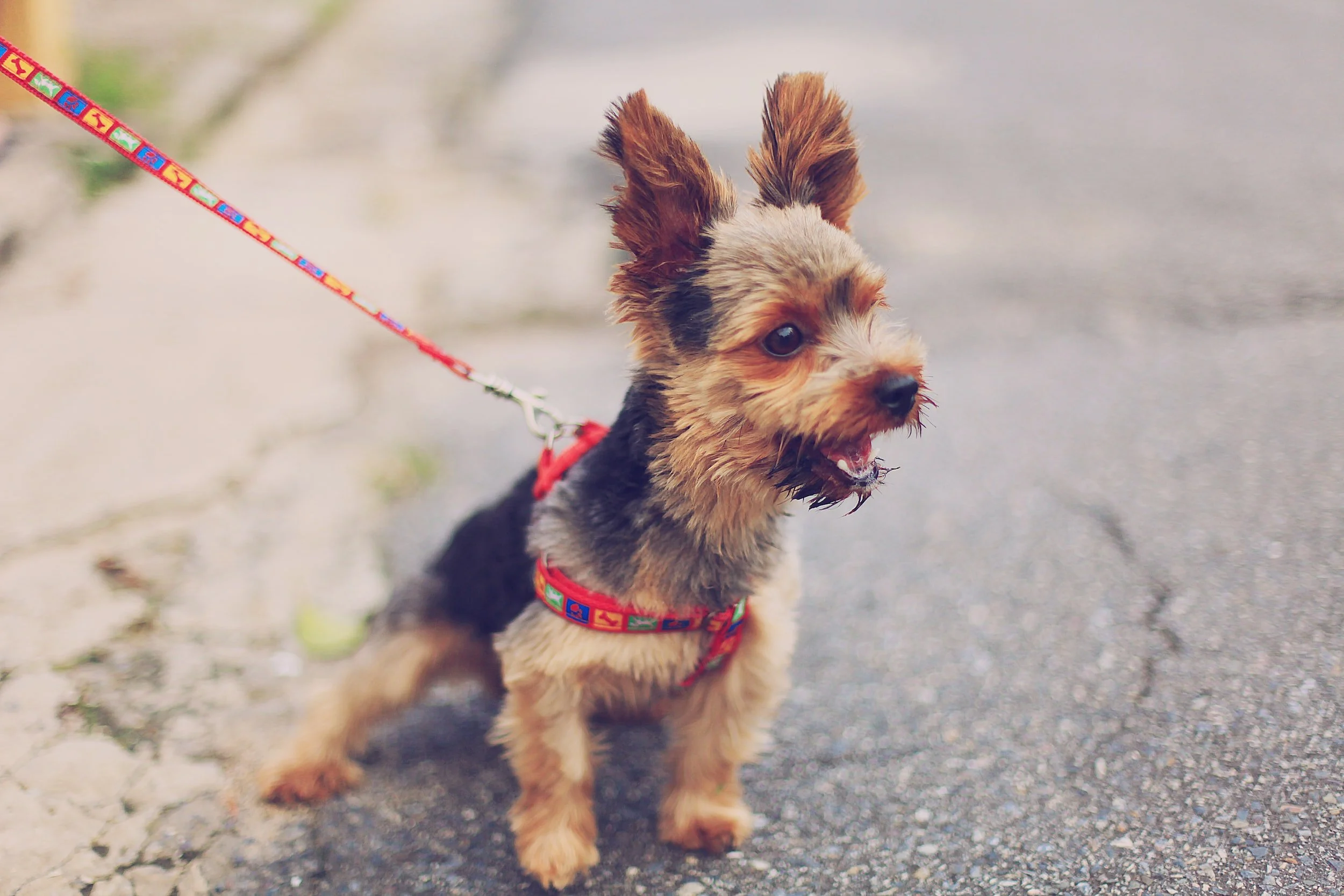Leash reactivity is arguably one of the most common behavioral issues faced by dog owners. It can be as frustrating for you as it is for your fur baby, especially if you live in the city & your neighborhood is like most, full of dogs, cyclists, and pedestrians who may trigger your dog's unwanted reactions. Fortunately, there are ways to manage this issue and make your walks a more enjoyable and stress-free experience for both you and your four-legged friend. Let's discuss 5 tips to help manage leash reactivity in dogs, ensuring that each walk becomes an opportunity for bonding and training.
Understand the root cause of leash reactivity:
Leash reactivity can stem from various factors, such as fear, frustration, or over-excitement. Understanding the root cause of your dog's reactivity is essential for tailoring your approach and effectively addressing the issue. Observe your dog's body language and try to identify any patterns or triggers that cause the unwanted behavior - this will help you develop a plan to manage it. Consulting with a professional trainer or behaviorist can also be beneficial in understanding the underlying cause and guiding you through the process.
Implement desensitization and counter-conditioning techniques:
Desensitization involves gradual exposure to the stimulus that triggers your dog's reactivity while counter-conditioning works on changing the dog's emotional response to the stimulus. To practice desensitization, start by exposing your dog to their trigger at a distance where they're able to remain calm. Gradually decrease the distance over time, allowing your dog to get used to the trigger without reacting. To apply counter-conditioning, pair your dog's trigger with a positive experience, such as treats or praise. This will help rewire their emotional response, associating the trigger with a positive outcome rather than promoting anxiety or frustration.
Train the "look at me/focus" command:
An excellent way to redirect your dog's attention away from their trigger is by teaching them to focus their gaze on you. Start by holding a treat to your eye level and say "focus" when your dog makes eye contact with you. Reward them with the treat when they maintain eye contact, even if it's just for a moment. Gradually increase the duration of eye contact before rewarding. Once your dog has successfully mastered this command, you can use it on walks to refocus their attention on you whenever you sense a reactive situation approaching.
Utilize positive reinforcement and training tools:
Using positive reinforcement during your training sessions will help promote obedience and reduce your dog's leash reactivity. Reward your dog with treats and praise for maintaining a loose leash and ignoring their trigger. You may also consider using training tools such as a front-hook harness or a head halter to give you more control during walks. These tools can help reduce pulling and increase your dog's focus on you.
Allow for decompression and exercise:
Providing your dog with ample opportunities to decompress and exercise is essential for managing leash reactivity. A well-exercised dog is more likely to be relaxed during walks and less reactive. Allow your dog to explore off-leash in secure areas or engage them in high-intensity activities like fetch or agility training. Giving your dog an opportunity to decompress after an incident can also help prevent further stress and anxiety.
Leash reactivity can be a challenging behavior to manage, but with patience, consistency, and the right techniques, it is possible to make walking a more enjoyable experience for both you and your dog. By understanding the root cause of their reactivity, employing desensitization and counter-conditioning techniques, teaching the "look at me" command, using positive reinforcement and training tools, and providing opportunities for decompression and exercise, your dog's leash manners can drastically improve. Remember, don't be afraid to seek professional guidance if needed. Enjoy the journey as you work towards a better, more relaxed walking experience





Meet Kathy and her diverse crew of pets in this month’s Tails of the Team! While Off Leash MKE focuses on dogs, Kathy’s love for animals extends to a flock of rescue birds, each with their own unique personality. Read on to learn more about her feathered friends and her dog, Zoey!